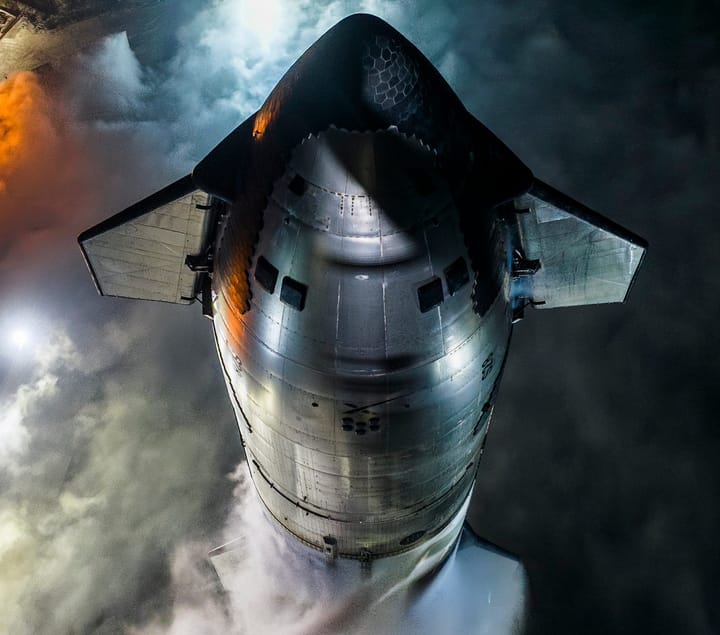Are NASA and Boeing playing a risky game with Starliner’s return to Earth?

When NASA and Boeing finally launched astronauts Butch Wilmore and Suni Williams on Boeing’s Starliner capsule on Wednesday, June 5 it marked the end of a long battle to get the troubled spacecraft to the International Space Station with astronauts onboard. As soon as the spacecraft got to orbit however, issues began to surface with known helium leaks and faulty thrusters.
Spaceflight is and has always been a risky endeavor. NASA knows this, and so do the cadre of astronauts in rotation at space agencies across the globe. But there is a fine line between acceptable and unacceptable risk. Finding and maintaining a visual on that line is important, and one can only hope that NASA and Boeing are not, as we speak, repeating the mistakes that have costed the lives of astronauts in the past.
Before Starliner launched atop a ULA Atlas 5 booster, it was already apparent that a helium leak had developed in the spacecraft’s service module. This in itself was not a huge problem. Other spacecraft like SpaceX’s Dragon have suffered similar issues in the past, and if contained can indeed be thought of as an acceptable risk. Helium onboard these spacecraft are used as a means of pressurising a spacecraft’s propulsion system, responsible for boosting and manoeuvring a spaceship while in orbit. It’s an essential part of navigating a spacecraft like Starliner to and from the ISS, and ensuring its safe return to earth.
The leaks that had been discovered before launch were exacerbated however with the discovery of two more helium leaks once the spacecraft was in orbit, and another after docking had taken place. The first helium leak was thought to be the result of a faulty gasket, the replacement of which was ruled out due to the fact that it would have required destacking the rocket and returning the spacecraft to Boeing’s production facility, a move that would have caused Boeing further embarrassment after the array of similar moments in the lead up to Starliner’s uncrewed test flight, and would have delayed this launch even further. The fact that more helium leaks were discovered is an indication that Boeing don’t fully understand the source of the leaks, something that Boeing’s Commercial Crew Program manager, Mark Nappi alluded to in a post launch press conference this past week.
While the helium leaks are problematic, they don’t necessarily pose a risk to flight due to the ample reserve carried on the spacecraft. What was more worrying was the unexpected shut down of five of the Starliner’s twenty-eight reaction control system (RCS) thrusters at various points prior to docking, and this has catastrophic potential.
When Starliner was launched on its first test flight to the ISS, the spacecraft had issues with the its mission clock and flight software that ended in the failure of the mission. Due to the issues with the system clock and software, the spacecraft thought itself in a completely separate phase of flight that it was in at the time, and expended so much fuel in the process that it had no fuel left to even attempt a docking with the ISS. After this first flight Boeing sent the spacecraft on a second unmanned orbital test flight at it's own cost, a mission that saw very similar failures on the RCS thrusters that were observed after the crewed launch last week. This is a pretty good indication that despite Boeing’s best efforts, they still haven’t gotten to the bottom of the thruster issues. The Starliner’s first flight came very close to the destruction of the spacecraft upon reentry, and even though Boeing have introduced an array of fixes identified during NASA’s post flight investigation of its OFT missions, doubt still lingers on whether or not Boeing know the exact extent of the issues we see today.
NASA and Boeing are home to some of the best minds in the spaceflight industry today, and have the ability to discern for themselves whether or not it would be safe to entrust the Starliner with Butch Wilmore and Suni Williams’ safety during the riskiest part of the Starliner flight test: the de-orbit. Indeed, Wilmore himself as the commander can opt not to return in the Starliner if he deems it too risky. This is not necessarily where the biggest worry lies. The most pressing issue at hand is that of commercial pressure, and the potential for a company already under intense public scrutiny to influence a decision on safety in favour of avoiding further public embarrassment.
Boeing has had a very tough few years, and the problems with its commercial airliner division have been well documented. Systemic issues with company culture exacerbated by poor contractor performance and communication have costed Boeing dearly. The company has been at fault for prioritizing its own valuation over quality and safety, and it is this that one can only hope hasn’t extended into its space flight operations.
In all likelihood, NASA wouldn’t allow the spacecraft to return to earth with astronauts on board if the problems with the RCS thrusters can’t be sufficiently explained and risks mitigated. The lessons that NASA have learnt with the Challenger disaster must be put into practice today. That flight was a prime example of what could happen when a contractor gives the agency complete reassurance in order to avoid public embarrassment and drawing the ire of NASA.
From an outside perspective one can only speculate as to the conversations currently taking place between NASA and Boeing while the Starliner is docked with the ISS. The lives of two astronauts are on the line, and if the risk of RCS thruster failures cannot be quantified and understood sufficiently , the agency will in all likelihood send Starliner back to Earth without its crew. This will leave a question as to what Wilmore and Williams will do in the meantime. The pair can stay aboard the ISS until a plan can be made for their return to Earth. The most likely outcome in a scenario like this is to bring them back on the SpaceX Dragon capsule currently docked to the ISS, or have another Dragon capsule sent to the ISS uncrewed to bring them home. If the pair were to come home on Dragon Endeavour (currently docked), two extra seats will have to be sent to the ISS on the next available cargo mission. Dragon is rated to carry seven astronauts if needed, and with crew 8’s compliment being 4, the pair should be able to come home on Dragon without too much of a problem.




